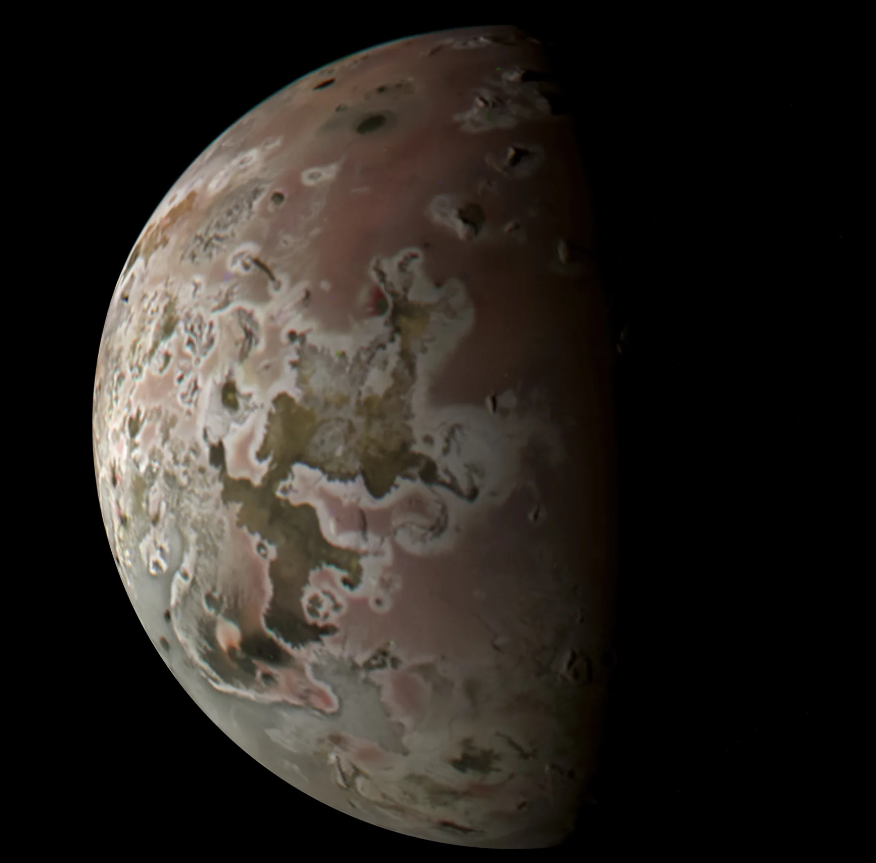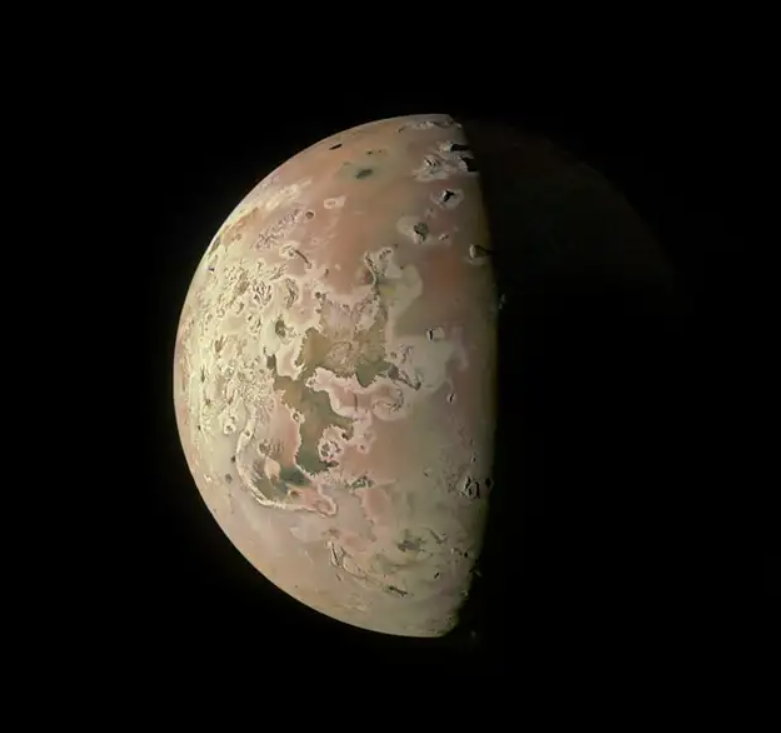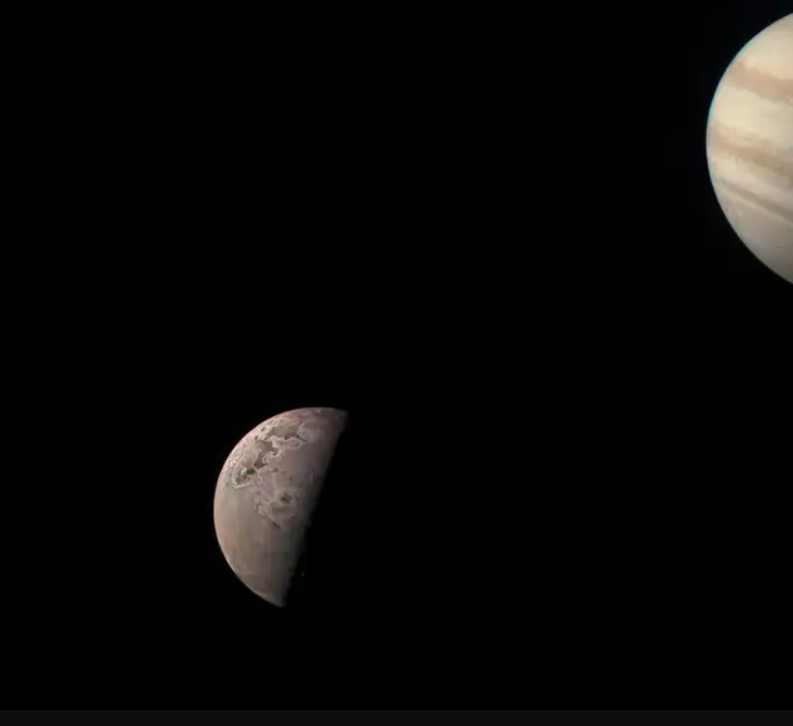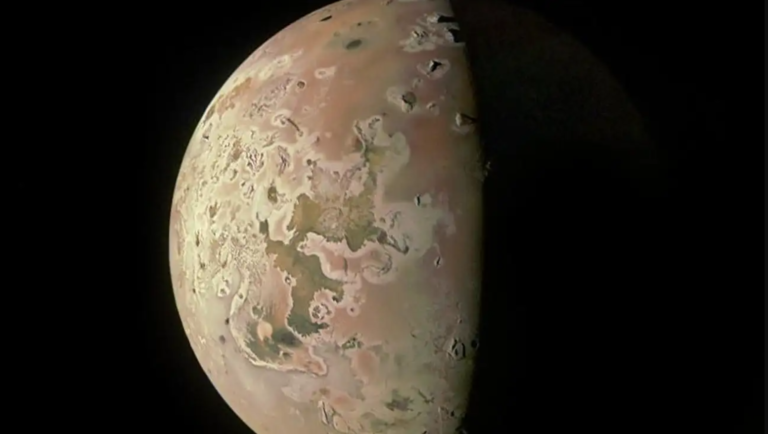NASA’s Juno Mission Exposes the Infernal Scenery of Jupiter’s Moon Io in its Recent Flyby
Recently, the Juno spacecraft acquired fresh images of the solar system’s most volcanically active celestial body.
After years of closely studying Jupiter, the Juno spacecraft has shifted its focus to Jupiter’s moons. During a recent close flyby of one of Jupiter’s eeriest moons, Juno captured images of the scorched surface of a volcanic world, trapped in a haunting gravitational dance.
This week, NASA unveiled newly acquired images from Juno’s flyby of Jupiter’s moon Io on October 15. These images provide a foreboding glimpse of the solar system’s most volcanically active world, bearing the scars of its tumultuous 4.5 billion-year history.

Juno mission images are shared with the public via the mission’s website, and frequently, data visualization experts apply their expertise to transform raw data into stunning visual representations. The image above was processed by software engineer Kevin Gill, while the one below was edited by Ted Stryk.

This represents one of the most detailed observations of Io as the Juno spacecraft gradually approaches the moon. Io’s surface bears the scars of numerous volcanoes and lakes of molten silicate lava, giving the moon a charred appearance, as if it has endured immense suffering.

Positioned between the formidable gravitational influence of Jupiter and the gravitational pull of its sibling moons Europa and Ganymede, this moon experiences continuous stretching and squeezing, which fuels its volcanic processes.
NASA’s Juno spacecraft, conducting a comprehensive study of the Jovian system since 2016, previously observed Io during flybys in May and July. In September, Juno also captured an intimate celestial portrait of Jupiter and Io, depicting the gas giant and its moon in close proximity. The upcoming encounters between Juno and this volcanic world are scheduled for December 30, 2023, February 1, 2024, and September 20, 2024, as Juno approaches cautiously to collect further data on its dynamic activity.
15-image time-lapse of Io, using images acquired by @NASAJuno spacecraft’s JunoCam over the weekend. pic.twitter.com/nDGwR2vOlx
— Jason Perry (@volcanopele) October 18, 2023
As Jupiter’s innermost large moon, Io serves as the primary origin of the majority of charged particles present in the planet’s magnetosphere, generating a torus-shaped cloud of ions and electrons enveloping Jupiter, known as the Io Plasma Torus. This plasma torus materializes when atmospheric gases escaping from Io become ionized.
In forthcoming flybys, researchers from the Southwest Research Institute (SwRI) plan to employ the Hubble and James Webb telescopes for simultaneous remote observations of this Jovian moon.
This article is republished from GizModo under a Creative Commons license. Read the original article.
Do not forget to share your opinion with us to provide you with the best posts !




0 Comments